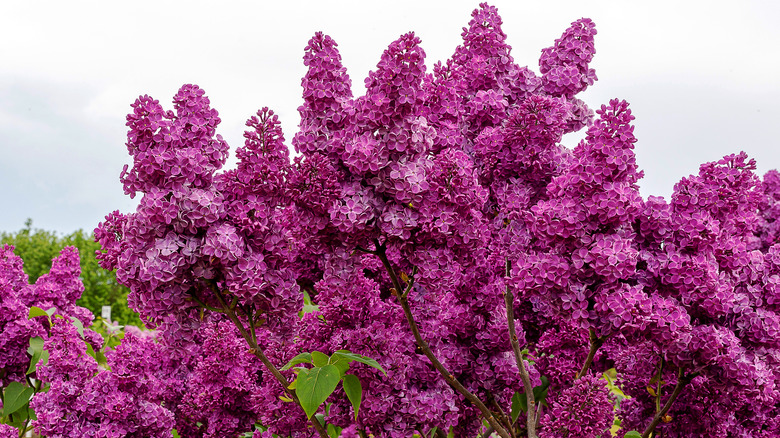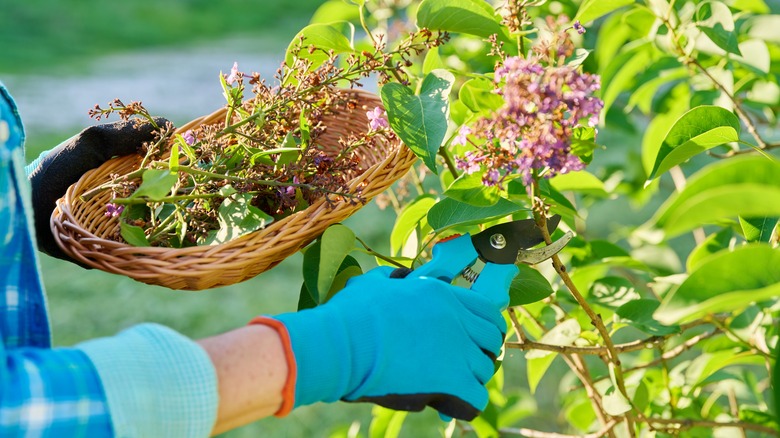Creating a bird paradise in your backyard needs a little more than simply placing birdfeeders outside. A more effective way of getting birds to not just stop by but move in is to provide plants that can support their needs on an ongoing basis. Lilacs (Syringa vulgaris) are one of the best varieties of flowering shrubs to do just that. These spectacular bushes offer vibrant color and a sweet fragrance that reminds you of spring. Even after those beautiful buds are gone, the shrub itself continues to create a valuable habit for your feathered friends.
Lilacs are highly effective at providing support for most types of birds, as well as other pollinators like bees and butterflies. You may even notice a few hummingbirds making their way towards the flowers to access the nectar. While you’re enjoying them for their beauty, these bushes are also providing shelter for many bird species. It’s not uncommon to see blue jays tucked into them or a robin’s nest built right inside the inner parts of the shrub. The branches are strong enough to support these larger birds and the insects that lilacs encourage provide a good food source for those birds that munch on them. You can build a bird habitat using lilacs of various species, colors, and types, filling in the type of space you have. With a few careful steps to ensure success, this is an easy choice to attract birds to your garden.
Where to grow lilacs to attract birds

Before investing in lilacs, be sure you have the right environment for them. These plants are available in numerous varieties, though the common lilac is the best-recognized among them. It can grow as tall as 20 feet, with bright pink, purple, and other pastel-like colors. The leaves have a slight heart shape to them and a smooth, soft texture. For these larger shrubs to do well and attract birds, place them in an open area rather than near a structure; they’ll need room to grow in all directions and benefit from full sun.
The key to success, and to creating the blooms that bring birds in, is ensuring the soil is properly drained while retaining moisture. Lilacs also do best in a slightly alkaline to neutral soil. The best way to support the plants is to add organic material to the soil, though a low-nitrogen, high-phosphate fertilizer can work well here, too.
Typically, planting lilacs in the fall is best, prior to the ground freezing. Wait until the leaves have fallen and then plant. That gives your plants the best chance to survive because new roots will have some time to develop before the heavy growth season of spring. If you didn’t get them in on time, you can plant in early spring but it’s important to do so before the buds start to bloom. If you live in an area with harsh winters, plant your lilac bushes in the early spring.
Supporting birds and lilacs in your garden

Once lilacs are in place, support them with routine watering and soil amendments as needed. It will take several years for the shrub to establish significantly and grow rapidly, but during that time, it will still likely be a great habitat for birds to call home. One way to encourage this is to help support the lilac’s flowering process. Again, the sun is important for this. You also need to remove any damaged or dead branches from the lilac to help the plant focus its energy on growth.
If you have a shrub that didn’t do well in the first year and is now leggy and tall but not filling out, consider the value of renewal or rejuvenation pruning — the process of removing a significant portion of older stems right at the base of the plant, to encourage new, better-blooming ones over time. Most of the time, you shouldn’t need to do this during the first few years of growth. Let the bush have time to establish. Also, keep an eye on the lilac for pests like oyster-shell scale and lilac borers, which will damage the plants.
After flowering, prune off the flower stems. This helps to encourage the growth of branches and leaves, which will help to bring birds into the area. You’ll also want to ensure your shrubs are given the chance to fill out, as this is what provides the ideal habitat for birds.
It is important to note that lilac bushes are considered an invasive plant species in the United States. Oregon State University Extension Services notes that lilac bushes can propagate through broken stems and seeds spread in the wind. Please take this into consideration before deciding if planting lilac bushes are right for your yard



